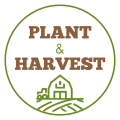Introduction: The Forage Decision That Shapes Livestock Production
Feed represents the largest operational expense for livestock producers—accounting for 50-70% of total production costs in dairy and beef operations. Yet among this substantial investment, one fundamental decision dramatically influences herd health, productivity, and profitability: choosing between silage and hay as primary forage sources.
This seemingly straightforward choice carries profound implications. The forage type you select affects milk quality and butterfat content in dairy cattle, weight gain efficiency in beef animals, reproductive performance across all livestock, and the entire infrastructure investment required for feed storage and handling. Two neighboring operations producing identical cattle on identical land can achieve dramatically different results based purely on forage selection and management.
Many producers default to traditional practices without truly understanding why—their grandparents fed hay, so they feed hay. Others recognize silage’s productivity benefits but underestimate infrastructure requirements or struggle with fermentation management. The optimal answer rarely exists in absolute terms; instead, it depends on your specific circumstances: livestock type, production goals, climate, available labor, infrastructure, and long-term vision.
This comprehensive guide demystifies the silage versus hay decision. You’ll understand the fundamental differences, recognizing how production methods create vastly different nutritional profiles and management requirements. You’ll explore the advantages and disadvantages of each approach, then apply this knowledge to your specific operation, determining which forage—or combination of forages—maximizes productivity and profitability.
What Is Hay? Understanding Dried Forage Fundamentals
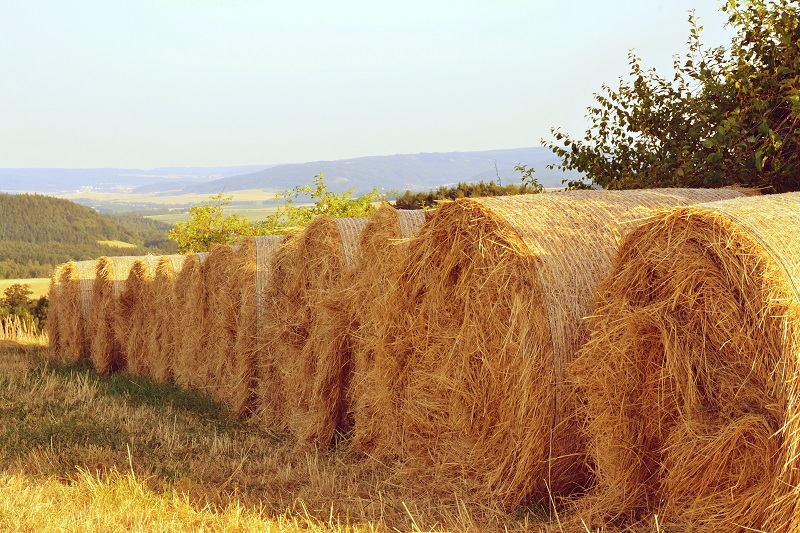
Hay represents humanity’s oldest preserved forage method—entire civilizations developed around the ability to dry and store grass and legumes for winter livestock feeding. Modern hay production maintains this ancient principle: harvest plants at optimal nutritional maturity, dry them to low moisture content (typically 15-20%), then store in protected conditions allowing preservation for months or years.
The Haymaking Process
Cutting – Forage crops (grasses like timothy, orchardgrass, or fescue; legumes like alfalfa and clover) are cut using mower or mower-conditioner equipment. Timing is critical—cutting at boot stage (grass species) or early bud stage (legumes) captures peak nutrition before flowering depletes nutrients.
Drying – Cut forage lies in windrows exposing it to sun and wind. Weather conditions dramatically influence drying speed: ideal conditions (sunny, windy, low humidity) dry hay within 3-5 days; poor conditions (cloudy, still, humid) extend drying to 10+ days, risking nutrient loss and weather damage.
Baling – Once moisture reaches target (typically 15-20%), forage is baled into convenient handling packages. Common formats include small rectangular bales (40-60 pounds, hand-portable), large rectangular bales (1,200-1,600 pounds, equipment-handled), and large round bales (1,000-1,500 pounds).
Storage – Bales are transported to covered storage (barns, sheds) preventing rain exposure and UV degradation.
Nutritional Characteristics of Hay
Hay’s nutritional value depends critically on harvest timing and weather conditions during production:
Peak Quality Hay – Cut at optimal stage before significant flowering, dried under favorable conditions, and protected from weather delivers consistent nutrition: approximately 12-15% crude protein, 55-65% total digestible nutrients (TDN) for grass-legume mixes.
Over-Mature Hay – Cut after significant flowering or seed development provides substantially reduced nutrition: 7-10% crude protein, 45-55% TDN. Large structural carbohydrates (lignin) reduce digestibility.
Weather-Damaged Hay – Rain-soaked during drying, sun-bleached through extended storage, or moldy from damp conditions may contain toxins (from mold), lost soluble nutrients (leached by rain), and reduced digestibility. Quality deterioration occurs progressively.
What Is Silage? Understanding Fermented Forage Production
Silage represents a fundamentally different preservation approach. Rather than drying forage, silage involves harvesting plants at high moisture content (typically 60-70%), chopping finely, packing tightly in anaerobic (oxygen-free) conditions, and allowing controlled bacterial fermentation to preserve the forage.

The Ensiling Process
Harvest Timing – Unlike hay requiring drying, silage crops are harvested at peak moisture when nutritional value peaks. Corn silage is harvested at 60-70% moisture (typically mid-September through October in northern U.S.); grass silage harvests at 50-60% moisture.
Chopping – A forage harvester chops plants into small pieces (typically 0.5-0.75 inches). Small particle size is critical—it ensures adequate packing density, reduces oxygen availability, and creates uniform fermentation.
Transport and Packing – Chopped forage is transported to storage structure (horizontal silo, silage bag, pit silo, etc.) and packed aggressively using tractors and specialized equipment. Dense packing removes air, creating anaerobic conditions essential for fermentation.
Sealing – Once storage reaches capacity, the system is sealed completely: horizontal silos are covered with plastic sheets and weighted with tires, silage bags are sealed, pit silos are covered and weighted. Complete oxygen exclusion triggers anaerobic fermentation.
Fermentation – Naturally-occurring lactic acid bacteria multiply in the oxygen-free environment, producing lactic acid that lowers pH from ~6.5 to ~4.0-4.5. This acidification preserves forage by inhibiting spoilage organisms. Optimal fermentation requires 3-6 weeks.
Nutritional Characteristics of Silage
Well-made silage preserves nutrients captured at harvest exceptionally well:
Quality Silage – Properly fermented silage maintains nutrition harvested at peak: 12-16% crude protein (corn silage typically lower at 7-9%; grass silage higher), 65-75% TDN. Fermentation produces organic acids enhancing palatability and digestibility.
Poor Silage – Inadequate packing allows oxygen penetration causing aerobic degradation; spoilage organisms multiply, reducing nutritional value dramatically. Weak fermentation (insufficient lactic acid production) allows butyric acid-producing bacteria dominating, creating poor-quality, musty-smelling silage.
Moldy Silage – Oxygen exposure during storage or feed-out allows mold growth. Many molds produce mycotoxins (aflatoxin, fumonisin) damaging liver and reproductive organs in livestock. Mycotoxin-contaminated silage creates serious health and production losses.
Advantages of Hay: When Traditional Forage Makes Sense
Economic Simplicity and Lower Capital Investment
Hay production requires basic equipment: a mower, tedder, and baler—equipment most farmers already own or can access affordably. A small operation can produce quality hay with under $5,000 equipment investment. No infrastructure (silos) requires capital installation before production begins. Hay’s simplicity appeals to beginning farmers and operations with limited capital.
Ideal for Specific Livestock Types
Horses – Equine digestive systems evolved on dried forage; fresh silage’s fermentation products (lactic acid, ethanol) irritate sensitive digestive tracts. High-quality hay provides optimal nutrition without digestive upset. Horses thrive on grass hay; many performance horses receive legume-grass mix hay.
Sheep – Unlike cattle, sheep typically receive less high-quality silage due to acidosis risks if silage replaces significant forage portions. Hay blends with strategic silage supplementation provide better outcomes.
Beef Cattle on Maintenance Diets – Beef cattle not requiring maximum growth rates thrive on good-quality mixed hay. Lower-cost hay supports grazing animals during winter periods when supplementation isn’t critical.
Suitability for Dry Climates
Regions receiving consistent dry conditions, low humidity, and minimal surprise rainfall favor hay production. Western states (Colorado, Wyoming, Montana, parts of California) produce excellent hay because weather consistency ensures reliable drying and storage. In these regions, silage offers fewer advantages given hay’s proven success.
Superior Long-Term Storage
Properly stored hay maintains nutritional quality for years. A barn full of hay provides security through extended drought, emergency feed shortages, or unexpected livestock acquisition. Silage, conversely, degrades gradually after fermentation completion; quality declines over months.
Ease of Livestock Introduction and Adaptation
Switching hay sources or introducing new livestock to existing hay causes minimal digestive disturbance. Horses transitioned between different hay types rarely experience problems. Silage switches, particularly in high-producing dairy cattle, can disrupt rumen fermentation and milk production.
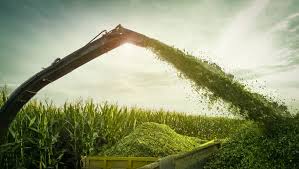
Advantages of Silage: Why Modern Producers Embrace Fermented Forage
Superior Nutritional Value and Production Performance
Silage captures forage nutrients at peak ripeness, then preserves them through fermentation with minimal oxidative losses. This nutritional preservation translates to superior animal performance: dairy cattle on optimal silage produce 2-4 additional pounds of milk daily compared to hay-fed counterparts; beef cattle gain 0.5-1.0 pound daily faster on silage.
For high-producing dairy cattle, this advantage justifies silage’s additional complexity. A 70-pound-per-day milk producer requiring 40+ pounds dry matter daily needs forage supporting 1.8-2.0 Mcal/pound energy density. Quality silage delivers this; hay typically provides 1.5-1.7 Mcal/pound.
Exceptional Palatability and Feed Intake
Fermentation produces lactic acid, ethanol, and aromatic compounds that livestock find extraordinarily palatable. Cattle eagerly consume silage, often eating more volume than hay offers. Increased intake means increased energy and nutrient consumption, directly translating to improved production.
In practical terms, a dairy cow eating 50 pounds of silage daily consumes more total energy than the same animal eating 50 pounds of hay—simply because silage’s higher digestibility means more of each pound converts to available energy.
Crop Flexibility and Production Integration
Silage production works with numerous crops unsuitable for hay: corn (silage at 60-70% moisture), small grains (barley, oat silage), and even agricultural byproducts (corn stover, soybean straw). This flexibility allows producers to maximize every field’s contribution to livestock feeding.
A producer might grow corn silage as primary forage, grass hay as secondary, and oat silage as supplementary spring forage—diversifying feed sources and spreading production labor across seasons.
Preservation of High-Quality Forage Quality
Unlike hay, which degrades with weather exposure during harvest, silage’s fermentation actually “locks in” peak nutrition. Corn silage harvested at optimal moisture contains that day’s nutritional value indefinitely (barring spoilage). Hay harvested at boot stage but rained on repeatedly loses quality progressively.
For producers in wet climates (Midwest, Northeast, Pacific Northwest), silage offers reliability hay cannot match. Weather conditions won’t damage properly-fermented silage; they can devastate hay crops.
Concentrated Feed Production and Scale Advantages
Single silage system (large-scale chopper, blower, modern storage) can produce hundreds of tons annually. Scaling hay production requires proportional increases in equipment and labor—more bales, more handling, more storage space. Silage’s efficiency creates economies of scale favoring larger operations.
A 500-cow dairy might require 2-3 silage systems but would need vast infrastructure for equivalent hay production and storage.
Disadvantages of Hay: Realistic Challenges
Weather Dependency and Harvest Risk
Hay production concentrates into brief weather windows. A 3-5 day rain at critical drying time can destroy an entire year’s hay crop or dramatically reduce quality. Northeastern states lose significant hay acreage annually to June rainfall when peak-quality alfalfa reaches optimal harvest stage.
Rain-soaked hay develops mold; extended drying periods leach soluble nutrients (sugars, proteins); over-dried hay loses nutritional quality. Weather risk creates substantial production uncertainty in many regions.
Nutritional Variability and Quality Control
Unlike silage’s fermentation providing consistent preservation, hay quality depends entirely on harvest timing and weather luck. Two fields of identical alfalfa might produce dramatically different quality based on flowering stage at cutting and weather during drying. Producers often don’t know hay quality until fed—disappointing performance indicates poor-quality forage already consumed.
Storage Space Requirements and Logistics
Hay requires substantial covered storage. A 500-cow operation requires 15,000-20,000 tons of forage annually—an enormous volume requiring massive barn space, protection from weather, and organization for orderly utilization.
Silage requires less storage volume and needs less elaborate weather protection if sealed properly; silos store equal nutrition in fraction of space hay requires.
Limited Suitability for High-Production Animals
High-producing dairy cattle (50+ pound daily milk) cannot consume enough hay to meet energy requirements. A cow needing 80+ Mcal daily energy cannot physically consume sufficient hay volume. These animals require silage’s energy density or concentrated grain supplementation.
Labor-Intensive Handling
Hay bales require repeated handling: baling, transport, stacking, restacking for seasonal use, and feeding daily via mechanical means. Each handling risks nutrient loss, mold development, and labor expense.
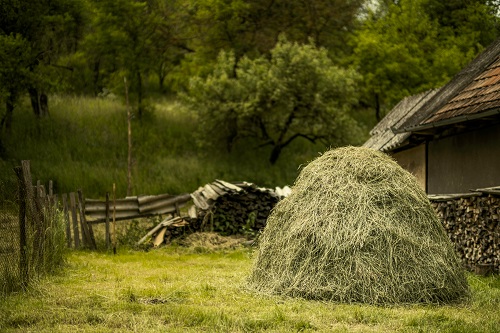
Disadvantages of Silage: Realistic Challenges
Capital Investment and Infrastructure Requirements
Silage production requires substantial upfront investment: forage harvester ($200,000-$800,000), storage infrastructure (silos $50,000-$500,000+), and handling equipment. Beginning farmers struggle affording silage systems despite long-term economic benefits.
This capital barrier means silage suits established operations with existing infrastructure more readily than startup ventures.
Technical Knowledge and Process Management Requirements
Producing quality silage requires understanding fermentation principles, packing requirements, moisture optimization, and mycotoxin prevention. Poor execution produces moldy, unpalatable, or nutritionally-deficient silage. Beginning producers often struggle mastering these complexities.
Critical variables (chopping length, packing density, moisture content, seal integrity) must be managed precisely. Mistakes create poor fermentation and poor-quality silage.
Labor Intensity During Harvest and Feed-Out
Silage harvest demands extended daily equipment operation (often 12-16 hour days during the optimal harvest window). Equipment breakdown during this critical period creates catastrophic delays. Harvest must occur rapidly; delays of weeks compromise forage quality significantly.
Feed-out also requires specialized equipment (silage wagon, blower, mixer) and skill to prevent aerobic deterioration (oxidation causing heat and mold growth).
Spoilage Risk and Economic Loss Potential
Improperly sealed or maintained storage allows oxygen penetration, triggering mold growth and mycotoxin production. Mycotoxin-contaminated silage causes livestock illness, reduced production, and potential fatality. Unlike poor-quality hay (which simply provides lower nutrition), poor-quality silage creates active health risks.
Silage face deterioration during feed-out creates aerobic heating. In warm weather, even properly-stored silage deteriorates at exposed surfaces if not managed carefully.
Environmental Considerations and Nutrient Management
Silage leachate (liquid draining from fermenting forage) contains substantial nutrients and organic matter. Uncontrolled runoff contaminates groundwater and surface water. Modern silage storage requires environmental controls (containment systems, leachate collection) adding cost and complexity.
Making the Choice: Matching Forage Type to Your Situation
The optimal forage approach depends on multiple farm-specific variables. No universal answer exists; instead, match system to your circumstances.
Choose Hay When:
You Operate in Naturally Dry Climates – Western states with reliable sunshine and low humidity enjoy optimal hay production conditions. Why struggle with silage’s complexity when hay thrives naturally?
Your Primary Livestock Are Horses or Sheep – These species thrive on quality hay; silage offers minimal advantage and may create digestive challenges.
You Seek Simple, Low-Capital Operations – Equipment, storage, and labor requirements for hay production remain lower than silage’s infrastructure demands.
You Maintain Moderate-Production Cattle – Beef cattle grazing and wintering on hay, without intensive milk production demands, perform well on quality hay.
You Value Long-Term Storage Security – Hay’s multi-year storability appeals to operations prioritizing feed security over peak production.
You Operate in Wetter Climates but Possess Alternative Options – If weather consistently challenges hay production, perhaps your comparative advantage exists in other areas; focus there rather than struggling with marginal hay production.
Choose Silage When:
You Produce High-Quality Dairy Milk or Beef – High-producing dairy cows (50+ pounds milk daily) require silage’s energy density. Beef finishing operations achieving premium weight gains depend on silage nutrition.
Your Climate Challenges Hay Production – Midwestern and Northeastern U.S. regions receive summer rainfall during optimal hay harvest windows. Silage’s fermentation independence from weather offers reliability.
You Have Capital and Infrastructure – Established operations with existing silos, harvesters, and management expertise leverage silage’s advantages readily.
You Want Forage Production Integration – Corn, small grain, and specialty crops suited to silage expand forage flexibility beyond grass-legume mixtures.
You Prioritize Maximum Nutrition Preservation – Peak harvest-timing nutrition, carefully preserved through fermentation, delivers maximum animal performance.
You Operate at Scale Benefiting from Mechanization – Larger operations (200+ cattle) achieve economies leveraging silage’s capital-intensive systems.
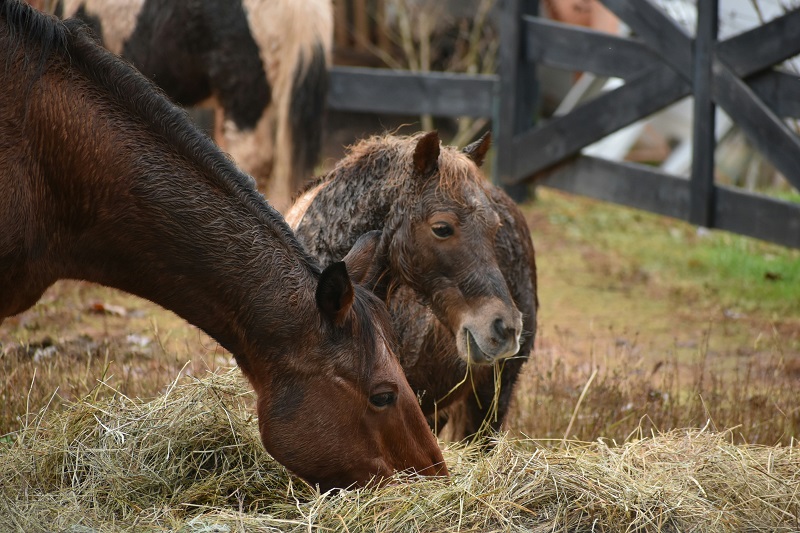
The Optimal Strategy: Combining Hay and Silage
Increasingly, sophisticated producers recognize that hay and silage serve complementary roles rather than representing either-or choices. Strategic integration maximizes advantages while minimizing disadvantages.
Integrated Forage Systems for Dairy Operations
A 100-cow dairy might operate:
- 60% of forage as quality silage – Providing primary energy and maximizing production
- 30% as quality grass-legume hay – Offering fiber, buffering rumen acidity, providing security if silage interrupted
- 10% other sources – Grazing (seasonal), crop residues, or cover crop grazing
This blend maintains production performance while reducing silage infrastructure requirements and providing backup security.
Integrated Beef Operations
A 200-head beef operation might use:
- Silage during finishing phase – Intensive grain-silage feeding optimizing growth
- Hay for cow-calf operations – Lower-cost forage for maintenance diets
- Pasture and crop residue – Seasonal and off-season grazing
Seasonal Forage Rotation
Many producers cycle forages seasonally:
- Spring: Fresh pasture or early-season silage from first cutting
- Summer: Pasture or grazed forage
- Fall: Late-season silage, harvested forage
- Winter: Stored hay and silage from previous harvest
This rotation aligns natural forage availability with production needs while spreading harvest labor across seasons.
Practical Production Considerations
Hay Production Best Practices
Harvest Timing: Cut grass at boot stage or legumes at early bud for maximum nutrition. Delaying harvest 1-2 weeks reduces protein 2-3%, TDN by 5-8%.
Weather Management: Cut early in week when extended dry period forecasted. Use tedders liberally to maximize drying speed. Bale at 15-20% moisture—not wetter (risk mold) or drier (nutrient loss).
Storage: Protect from rain and direct sun. Stack bales on gravel or concrete (prevents ground moisture). Cover with tarps or store in enclosed structures.
Testing: Sample hay for quality (forage analysis) before purchasing or using. Know what you’re feeding.
Silage Production Best Practices
Harvest Moisture: Corn silage optimal at 65-70% moisture (approximately 1/2 milk line on kernel). Grasses should be 50-60% moisture.
Chopping Length: Target 0.5-0.75 inch particles; fine chopping ensures packing density.
Packing Density: Use heavy equipment; target 16+ pounds per cubic foot. Tractor passes should be constant until storage full.
Sealing: Apply plastic immediately upon completion; weight with tires or sandbags. Seal thoroughly preventing oxygen entry.
Fermentation Time: Allow 4-6 weeks fermentation before opening. Begin feeding during cooler months (fall/winter) reducing aerobic deterioration.
Mycotoxin Prevention: Ensure adequate moisture and packing. Test silage for mycotoxins if mold visible or musty odor detected.
Cost Analysis and Economic Considerations
Hay Economics
Production Costs:
- Establishment/land: $50-$100/acre annually
- Harvest/baling: $50-$80/ton
- Storage: $10-$20/ton annually
- Total: approximately $100-$200/ton delivered
Advantages: Lower capital investment; simpler operations; flexibility
Silage Economics
Production Costs:
- Establishment/land: $80-$120/acre annually
- Harvest/storage: $30-$50/ton
- Storage infrastructure depreciation: $20-$40/ton
- Total: approximately $130-$210/ton delivered (varies significantly by region and scale)
Advantages: Superior nutritional value; premium performance return
Economic Reality: Silage costs more per ton but delivers superior nutrition. A dairy cow producing 2 additional pounds milk daily (roughly $6-$8 value) from silage nutrition typically justifies the cost difference.
Conclusion: Strategic Forage Management for Optimal Production
The silage versus hay decision isn’t about choosing the objectively “best” option—it’s about matching forage strategy to your specific circumstances, livestock requirements, climate, infrastructure, and production goals.
Hay remains an excellent choice for operations with favorable drying climates, horses and sheep, and moderate production requirements. Silage excels for high-production dairy, challenging climates, and large-scale integrated operations.
The most sophisticated operations embrace both, leveraging each forage’s advantages while minimizing disadvantages through thoughtful integration.
Your Path Forward:
- Assess Your Situation – Evaluate your climate, livestock type, production goals, and current infrastructure
- Calculate Economics – Determine which forage offers superior return based on your specific costs and animal performance expectations
- Test Small-Scale – If considering forage changes, begin with modest implementation (dedicating 20-30% of forage to new system)
- Monitor Performance – Track milk production (dairy), weight gain (beef), or body condition (all livestock) before and after forage changes
- Integrate Systems – Most likely, combining forages yields superior results to exclusive dependence on either
Whether embracing traditional hay, modern silage, or strategic combinations, informed forage decisions drive productivity, profitability, and livestock health. Start with clear understanding of differences, then apply that knowledge to optimize your specific operation.
Your herd’s performance begins with their forage. Choose wisely.
